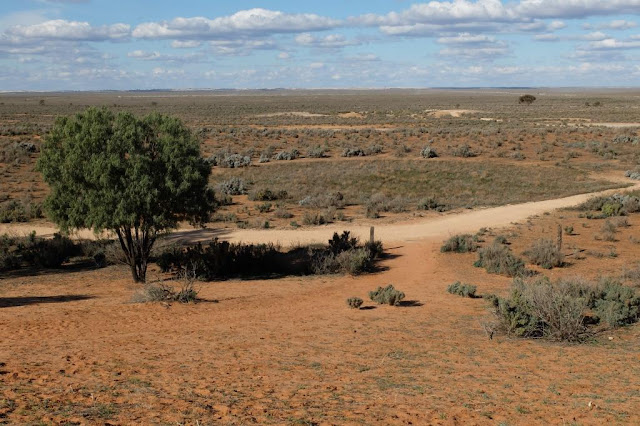Thanks to Bruce and his burly Ford Ranger we were able to travel the 80 or so kilometres of unsealed corrugated roads (+25 klm of sealed road) out to Mungo in relative ease. We were surprised at how well set up the Mungo Lodge was for visitors despite its isolated setting and the dry, tough conditions. There was a great cup of coffee waiting for us on our arrival - always a good sign.
The emus, in a fenced off area beside the front driveway, put out the welcome mat!
Our starting point at the Visitor's Centre ......
Up close, the lake bed's desert vegetation has a certain beauty.
The middle part of the walk climbs onto a low red sand dune (the old lake foreshore) where there was a grove of cypress pines, along with the usual (in this part of Australia) Mallee eucalypts.
The introduced pademelon vines are a curse in this part of the park.
This was an emu skeleton
Later, back at the lodge we joined about 6 other people for a sunset guided tour of the Mungo Lunette (Walls of China) - the most iconic feature of Mungo National Park. The lunette is made up of layers of sand and clay that over time have been blown up from the adjacent lakebed. They preserve thousands of "snapshots" of Aboriginal people's lives over their continuous custodianship of this land. Mungo Man and Mungo Lady were found in the lunette area. Access to this part of the park is not possible these days unless you are with an approved guide.
It was a magical experience for us to see this on this beautiful winter evening with our well informed guide ......
Shells from the ancient lake bed emerge out of the sand at every turn.
As do small bones and stone flints from ancient tools .....
The fine layer of dust from cars driving across the lake bed hangs around for a long time.....








































No comments:
Post a Comment